 Summer has finally arrived in Hibiscus Gardens, which means it's wedding time! Willa is super excited about her Aunty Jane's upcoming wedding but not so excited about her dress, which she tells her best old-age friend Frank, makes her look like a meringue. Still, it will be loads of fun and her dog, Woof, has the very special job of being the ring bearer. But summer also means bushfire season, and Willa is worried by the smoke rising from the mountains behind the town. Dad tells her not to worry as they head to the beach with her best same-age friend Tae. The wind seems to be changing though, and by the time they are back home, the smoke is bigger and closer. It starts raining - not water - but fire sparks - and they all spring into action packing backpacks, food for Woof and checking to make sure neighbours are safe. Suddenly there's a loud rumbling and raindrops, not fire sparks, fall from the sky. Everyone gathers in the middle of the road clapping and cheering and thankful they are safe. But not everything in the town was saved. Brookside Barn where the wedding was to take place, and where all the wedding dresses were being kept, has burned down, so the wedding is called off. Willa is worried about the koalas near the showground too. With the help of Tae and Frank, Willa hatches a plan to save the koalas, and orchestrate the biggest surprise wedding Hibiscus Gardens has ever seen! Jacqueline Harvey tackles some important concepts for younger readers in this fourth installment of Willa and Woof including bushfires, bullying and wildlife rescue, which she approaches in a way that is meaningful but not confronting. The metaphor of the fire as a dragon is a masterful use of language to impress upon the reader the danger of the bushfire situation. The gravity of rescuing and looking after injured wildlife is portrayed with tension and understanding, with the reader given the opportunity to see the other side of a bully. Seriousness is balanced with humour, and descriptions like 'Ginger Biscuit, the serial killer (cat)', '. . . a giant carrot that looked like it had legs' and 'Her caterpillar eyebrows, Bert and Hilda, . . .' will have readers laughing out loud. Another highly entertaining adventure filled with heart, friendship, compassion and fun, from one of Australia's best known authors. Supporting teaching themes could include bushfires, seasons, friendship, bullies, wildlife rescue, koalas, intergenerational friendships and dogs. Find out more about Jacqueline Harvey Published by Puffin Books an imprint of Penguin Random House Australia Released 4 April, 2023. ISBN: 9781761043345 Highly recommended for ages 6 - 9.
0 Comments
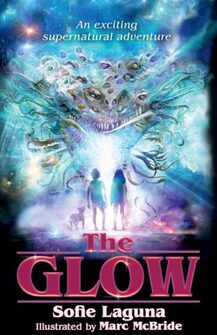 Megan is not like her other sisters. They are loud and love sport, whereas Megan is quieter and loves to draw. It’s not that she doesn’t love them, or her mum and dad, it’s just that the broom cupboard offers a quieter place to get away and draw her fantastical creatures. So does her friend Li’s place. Ever since Li moved in across the road two years ago, the girls have been inseparable. Li is an only child with a single mum, and things are a lot calmer at their house. Plus, Li is a creative too. She loves to write, especially about aliens, and brings Megan’s creatures to life by giving them their own names and backstories. Then one Friday, everything changes. A blue glow takes over the town and everyone in it, except for Megan, Li and Megan’s dog Callie. People stop and quietly stare in a zombie like state. And when Megan tries to draw, it seems the pencil takes on a life of its own and she can’t control her hand. The same happens when Li writes her stories. On their way to get help, Callie leads them to the Talora Caves where they see an eerie blue glow emanating from the cavern. It tries to capture their minds and pull them in. The girls will have to use all their courage and awaken their fantasy beasts to defeat the creature that is The Glow. This is a fast-paced, supernatural tale of adventure, friendship and heroism, set against a background of creativity and fantasy. Two ordinary girls are caught in an extraordinary situation and must use all of their creative skills to save their town. The story is extremely well written with short chapters, engaging language and plenty of mystery and excitement to keep the reader wanting more. The illustrations, especially those of the creatures, are very intricate with a hint of danger and menace, and will have huge appeal to those who loved the Deltora Quest series and the dragons, orcs, and other beasts from Middle Earth, Harry Potter and Hayao Miyazaki. As a lover of fantasy, I couldn’t put this one down and highly recommend it for upper primary and middle grade readers. Supporting teaching themes could include mythical creatures, dragons, fantasy, friendship, apocalypses, monsters, dogs, bravery, creativity, illustrating, writing. Find out more about Sofie Laguna Find out more about Marc McBride Published by Allen & Unwin Released March 2023 ISBN: 9781761066825 Highly recommended for ages 9 + 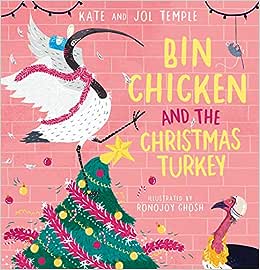 Ibis (affectionately known as Bin Chicken) has had enough of the noise and crowds of the city at Christmas. ‘Bah humbug! Not this again!’ she grumbles. ‘I can’t find my dinner with that racket below – shoppers and carols and all that ho-ho!’ Even the pigeon is wearing a Santa hat! She decides to gather her chicks and head to the beach. But what she doesn’t realise is that many other Australians have exactly the same idea, and when they arrive there are lots of children creating a very loud hullabaloo! Out from the shadows of the scrub steps a bush turkey, who knows exactly where to get some yummy food. They wait till the children have left for the beach with their ‘. . . boogie boards, beach towels and inflatable toys!’, and ever so quietly (watch out for the dog!) make their way inside the house, where they find a treasure trove of delectable Christmas delights. They poke their noses into everything – including some of the carefully wrapped presents – which is when their plan begins to unravel. They start pulling on the Christmas cracker from opposite ends and BOOOM! Oh no! This wakes the dog, sends the turkey into uncontrolled flight, and bird poo and feathers begin flying around as the Christmas tree tumbles. They manage to escape and luckily for Ibis, the bush turkey knows that if they wait just one more day, there will be tons of Boxing Day leftovers! This is another hilarious addition to Kate and Jol Temple’s Bin Chicken stories. The talented duo brilliantly captures the frenetic pace and noise of the holiday season in a city, and the feeling of wanting to get away from it all and head to the coast. The appearance of the bush turkey adds more humour with his ‘in the know’ information about how to get inside the house and start sampling the Christmas Day feast. It is the perfect slap stick companion for the Ibis and the chaos that ensues. The bit about ‘Bird poo flying around!’ will definitely be a winner with readers. The language is also very relatable with words like ‘servo’, ‘hotdog franks’ and ‘boogie boards’ making it very clear that this is an Aussie Christmas. The illustrations are a joy, with the bright colours and attention to detail a delight. Readers will notice something new each time they turn a page from the Christmas baubles and credit cards on the opening spread, the wonderful snaking lights of the highway, the old-fashioned television, and the last double page spread of a game of beach cricket. Plus there’s a sneaky little mouse who pops up on almost every page as well! My two absolute favourite details are the hats – Bin Chicken’s tuna tin and Bush Turkey’s crash helmet fit each creature’s personality perfectly! Supporting teaching themes could include Christmas, celebrations, birds, the Ibis, the bush turkey, hats, summer, beach life, friendship and resilience. Find out more about Kate and Jol Temple Find out more about Ronojoy Ghosh Published by Scholastic Australia Pty Ltd. ISBN: 98791761202414 Highly recommended for ages 3 - 7 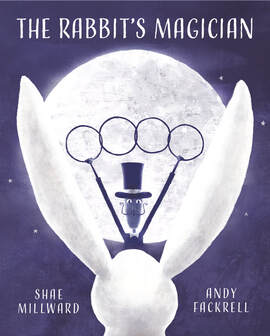
In this new picture book from Shae Millward we meet Ziggy, a rabbit who was once companion to The Amazing Albertino, a most marvellous and magnificent magician. They travelled the world together, delighting and surprising audiences. Albertino would make things disappear and then reappear, and when he tapped his wand three times and spoke the magic words, Ziggy would jump out of Albertino’s hat to the amazement of the crowd. After each performance, Alby (as Ziggy affectionately called him) would gaze up at the moon, and once told him, ‘The moon is a master of illusion Ziggy. It’s a dusty old rock. . . yet we see it as beautiful. It appears to shine but makes no light of its own. It seems to change shape, yet it is always whole.’ Albertino began spending a lot of time in his room, and Ziggy was certain he was working on a really BIG trick. Then one day when Ziggy woke up, Alby was gone. Alby had made all kinds of objects vanish before, but had never made himself disappear. And so Ziggy waits, and waits, and waits for him to reappear. As he waits, he meets Owl, and tells him how worried he is that something has gone wrong with the trick. Owl reassures him that the trick was a success, his greatest ever, and that he is not gone, but all around them. Albertino has simply changed from one form into another, and is now part of the moon, the stars, the rainbows and flowers. But most importantly, he will always be part of Ziggy's heart.
This is such a quietly emotive and beautiful tale of friendship, loss and acceptance. With the moon as a metaphor for being ever changing but at the same time always there, Shae Millward offers a gentle explanation of losing someone in the physical sense, but still having them with us in the memories and everyday reminders all around us. Andy Fackrell’s gorgeous illustrations are perfect support for the story, with his use of bold, bright colours when Ziggy and Alby are together, and subtle nighttime hues as Ziggy waits for his friend to return. Ziggy’s expressions from his sadness and confusion about Alby’s disappearance, to his pure joy at the realisation that he will always be with him, are enchanting and poignant in their simplicity. THE RABBIT’S MAGICIAN is an uplifting tale of love, comfort and remembrance, and would make a wonderful addition to collections and picture books dealing with grief. Supporting teaching themes could include friendship, loss, grief, love, magic, rabbits, animals, magicians, the moon, phases of the moon. Find out more about Shae Millward. Find out more about Andy Fackrell. Link to author interview with Shae Millward. Link to lesson activities. Published by Ford St. ISBN: 9781922696076 (HB) Highly recommended for ages 3 - 8 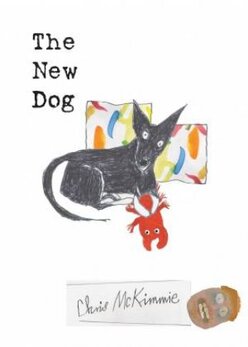 Chris McKimmie has a knack of being able to capture the essence of a story with language and images that are simple yet also have an underlying complexity that goes beyond what is on the page. His latest picture book is no exception. In The New Dog we meet Kiddo. Kiddo is very happy with the two snuggly futon beds, the water and food bowls, the king size bed he shares with his humans and the box full of stuff that Teddy has left behind. From this very first page Chris McKimmie reveals another layer to the story and gives us a subtle insight into the reason Kiddo has become part of this family. Kiddo loves to chew, dig, play, bark and eat anything left lying around or within reach on the kitchen bench! He’s also afraid of storms, hates baths and loves lying in the warm patches of sunshine in his yard. All the things you would expect from a loveable canine. Chris’s illustrations are a joy with bright colours and a slightly imperfect perspective that children love and see reflected in their own artwork. There is also a little help from his family for some of the drawings which adds to the feeling of warmth and inclusion in the images. There are clever plays on text direction and font changes which add to the fun and involvement for the reader. This warm and engaging story is a must have for anyone who has ever lost a canine friend and then experienced the delight of welcoming a new, playful, mischievous and instantly loveable family companion. Chris McKimmie is an award-winning writer, illustrator and artist whose book I NEED A Parrot, won the CBCA Picture Book of the Year Award in 2020. His stories are always quirky, eye catching and totally relatable for younger readers. The New Dog, aimed at readers aged 4 +, could almost be seen as a sequel to Me, Teddy, the story of the family’s beloved black Labrador, and would make a wonderful addition to any collection of animal stories. This review can also be found online in BuzzWordsMagazine Supporting teaching themes could include animals, dogs, loss of a pet, families, grief and stylized artwork. Find out more about Chris McKimmie Published by Ford Street Publishing ISBN 9781922696038 (HB) Highly recommended for ages 4 +  Matty has everything going for him - a loving family, great friends, great skills on the soccer field and pretty good grades at school - which should add up to a great life right? Well they did, until recently. When soccer season started this year Matty found he couldn't get himself onto the pitch without sweaty palms, a racing heartbeat and a mind that kept telling him he wasn't good enough. And he couldn't figure out why. Things got worse when he began dodging his friends calls and texts, missing birthday parties, not doing homework and avoiding school. He felt guilty, scared, angry and sad with himself, and all he really wanted to do was sleep the world away. But one morning his dad convinced him to go for a walk in the local national park where they came across an abandoned dog. Matty felt an instant connection to this small, frightened creature. After coaxing him into their car, taking him to the vet and eventually being allowed to adopt him and bring him home, 'Cliff' and Matty become inseparable. Cliff has 'good days and bad days', and as the dog begins to heal, Matty realises that he needs help to heal too. He summons up all his courage to eventually tell his dad that he thinks he might be depressed, to which his dad replies 'You've no idea how brave you're being by telling me that.' This is one of my favourite moments of the book. Kate Foster writes with such clarity, compassion and understanding about Matty's struggles. There is a beautiful empathy and strength that shines through in this story, and the relief Matty feels after he finally tells his closest friends about his depression is palpable. As is the surprise when he discovers that someone else his own age, whom he would never have suspected, is suffering from severe anxiety. This is my other favourite moment in the book as it is Matty's realisation that he is not alone. Animals, especially dogs (sorry but I'm totally biased about this!) are the perfect listeners and companions for when we're not feeling great. They know when we need a snuggle and will goof around with us when we're happy. They are like mirrors into our souls, emotional soothsayers, and seem to have an innate understanding of exactly what we need at any given time. Cliff was Matty's ideal companion. Kate's own experience with depression has no doubt given her an invaluable, first hand insight into this illness. Her writing is filled with emotion, and the story is meaningful and transparent without being patronising or reductive. This is an important, must have, highly recommended novel for upper primary and middle school. Matty is not alone as a young man suffering with depression as, according to the Beyond Blue organisation, one in seven young men aged between 16 and 24 experience depression or anxiety each year. If you are suffering from mental health issues you can contact Headspace, Kids Helpine or Reachout. Themes for teaching could include mental health, depression, anxiety, friendship, courage, self awareness, dogs, pets as therapy, families and father-son relationships. Find out more about Kate Foster. Release date May 4, 2022. Published by Walker Books Australia ISBN: 9781760654719 (PB) Highly recommended for ages 9 + 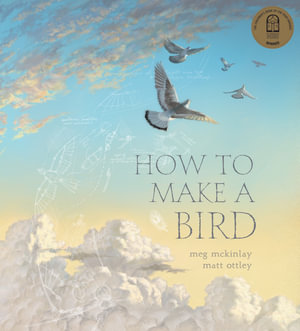 'Breathe deeply and take your time. The making of a bird is not a thing to be hurried.' '. . . feel your slowly beating heart fill with a kind of sadness, a kind of happiness. For this is when you will know that you have really made a bird.' These are my favourite lines form this beautifully delicate and evocative story. Yes there is a bird that is made, but it is so much more than just a bird. From the delicate bones gathered by the child, to figuring out how to put them together, and then the thoughtful imagining of what is needed for the bird to truly fly, are ideas expertly brought to life in Meg's soulful, meditative text. There is a sense of wonder at every page turn as we follow the journey of the child and the bird in its making. I love Matt's blueprint that forms part of the front cover illustration as this creates the simple deception that there is a blueprint to follow, when in fact there really isn't. His palette of soft, paler hues and tones throughout the majority of the story adds to the ethereal nature of the text. The exquisite, brighter colours of the feathers are a marvellous contrast and help focus the readers' attention on the possibilities of what the bird might do and become. How To Make A Bird is a story of self belief, individuality, resilience, belonging and limitless imagination, and is a picture book for all ages - not just younger readers. There are so many layers to both the text and the illustrations that you will discover something new every time you read this stunning 2021 CBCA Picture Book Award winner. Use this story in both primary and secondary classrooms for poetry studies, storytelling, art studies and for maker space ideas. Themes to be explored could include resilience, belonging, imagination, self-awareness, compassion and inventiveness. Find out more about Meg McKinlay. Find out more about Matt Ottley. Published 2020 by Walker Books Australia. ISBN 9781925381894 (HB) Highly recommended for ages 6 - 12 I would also recommend this book for middle and high school students. 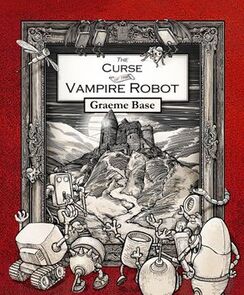 This new rhyming tale from award winning author Graeme Base has something for everyone - vampires, robots, computers, bravery, adventure and a fearless heroine. The story opens with the death of a robot whose battery has been drained in the dead of the night by the evil vampire laptop Voltoid. The robotic townsfolk are consumed with fear and panic as all have heard of the dreaded Curse of Voltoid! PC Web calls for a volunteer to confront Voltoid and erase all files from his hard drive. The only one courageous enough to take on the challenge is Gertie Gif, a lowly cleaning droid. Gertie sets off with determination and resolve up the Hill of Dread towards Voltoid's Gothic style castle. Along the way she manages to delete the terrifying ware-wolf's system and befriends a baby software-wolf. Once in the castle, Gertie finds Voltoid in sleep mode and can see he's in dire need of a system clean and software update. She's almost finished when she realises she has forgotten her software bag! The young software-wolf leaps forward declaring 'I've got the latest updates!' He sinks his teeth into Voltoid's core, and loads him up with V-DOS 10.4. As the vampire's screen changes from sickly green to desktop blue, he reverts back to his normal friendly self. Over time, Gertie and the young software-wolf's success is written into the history of the town, eventually becoming a meme with a total data stream! I absolutely love Graeme's play on tech terminology and there are lots of humorous character names (PC Web, MacSpam, Gertie Gif) and lines like 'I'm told the thing to do is drive a sharpened vector through his undead CPU', 'A cleaning out is what you need - now open up those ports.' And teachers will totally relate to the line 'No wonder I feel better - you've deleted Comic Sans!' This has to be one of the most overused fonts in education! Graeme's black and white illustrations are a delight and there is something new to discover every time the reader revisits a page. The aerial image of Gertie as she and the young software-wolf enter Voltoids' lair would be a wonderful study in perspective for young artists. A masterful interweaving of old and new that is a must have for school library and home collections. Use this story in classrooms for poetry studies, storytelling, myths and legends, art studies (perspective, use of black and white for impact, how to bring character to inanimate objects) and of course as a comparison study to the story of Dracula! Themes to be explored could include bravery, adventure and friendship. Find out more about Graeme Base Published 2021 by HarperCollinsPublishers Australia ISBN 9781460754696 (HB) Recommended by the publisher for ages 5 + but I would suggest 8 + due to style and complexity of language. 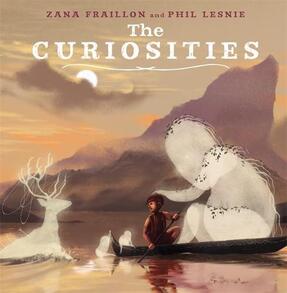 The Curiosities centers around a young boy named Miro, who begins to see the world in a way that is different to others. When the Curiosities first appear they seem to blend in, but gradually they show Miro the 'oddments and snippets', 'wonders and possibles' in the places where no-one else looks. Sometimes the curiosities would show Miro how to tickle songs from the earth, whisper up waves and dance with him deep into the night. The pull of the curiosities gradually became stronger and stronger and soon others in his village begin to notice them too. They became so loud that people began to stare, and no matter what he did, Miro could not tame them. They were almost unbearable, and he felt as though he was vanishing deep inside the earth. Then he heard the whisper of a village elder who helped Miro brush away the darkness of the curiosities. They were still there, but he found the more he connected with people, the easier it was to control them. And he noticed that many others had their own the curiosities too which helped him feel not so alone. There are many who deal with neurodiversities and disabilities, and this book is a wonderful celebration of who we are and how we see ourselves, and encourages us to not to worry too much how others choose to see us. Zana Fraillon is one of my favourite YA authors and she has managed the cross over to picture books flawlessly. Her text is poignant and uplifting, but also challenging, asking us to know ourselves first before we look at how we perceive others. Phil's whimsical and playful images draw us into Miro's world to see what life looks like through his eyes. His clever depictions of the curiosities as recognisable but wisp-like creatures, make us aware but not afraid of them, and inspires us to embrace the curiosities in all of us. Diversity, autism, neurodiversity, acceptance, empathy, perspective, community, culture and mental health are all topics that can be introduced and discussed when using this beautiful and highly recommended book in the classroom. Find out more about Zana Fraillon Find out more about Phil Lesnie Published in 2021 by Hachette Australia ISBN 9780734417848 (HB) Recommended for ages 4 - 8 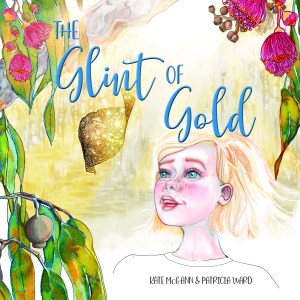 The Glint of Gold is there everyday if you look for it. You can see it in the white plum blossoms, the sparkles Jack Frost leaves and the colours of a sunset. You can hear it when you sing or listen to the song of a magpie, smell it when you walk in the bush after the rain, feel it when you dance in bare feet on the grass or snuggle close to someone. Each glint of gold is like a piece of treasure to be thankful for and remembered at the end of the day, knowing there will be more for us to find tomorrow. This is a beautiful, comforting story about taking pleasure in the every day. Kate's lilting text encourages us to slow down and look around at the small things that fill our hearts and bring a smile to our faces when we least expect it. Patricia's illustrations are full of colour and vibrance and with every page turn the reader discovers a new 'glint of gold'. A wonderful story of gratitude and mindfulness, The Glint of Gold is a celebration of the senses and the heart. Wellbeing, mindfulness, families and the colours and animals of the Australian bush could all be linked as teaching ideas to this gentle story. With thanks to Books On Tour PR & Marketing and Little Pink Dog Books for access to the digital copy. Find out more about Kate McGann here. Find out more about Trish here. Published 2021 by Little Pink Dog Books. ISBN 9780648964032 (HB) Recommended for ages 4 - 7 |
Archives
May 2024
|
|
The Book Tree. © Kerry Gittins 2024. All Rights Reserved. |
Visitors
|
|
|

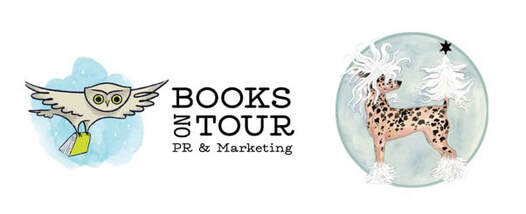
 RSS Feed
RSS Feed